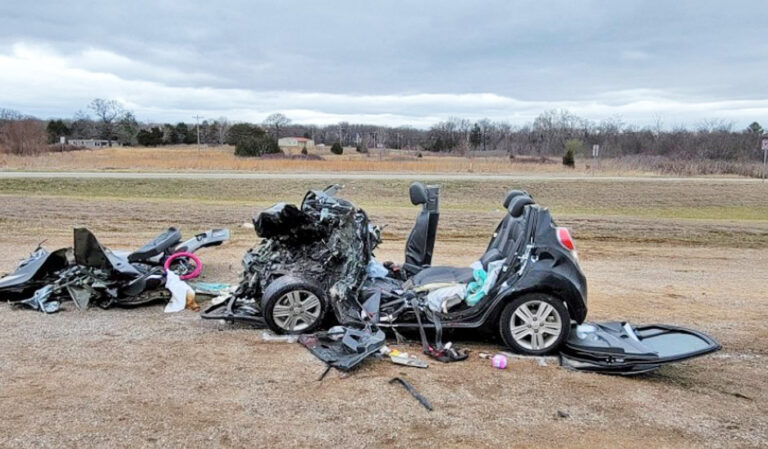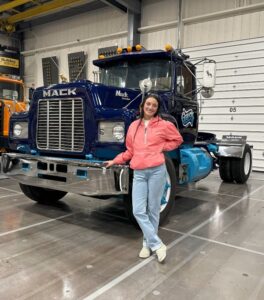WASHINGTON — Members of Congress and the Truck Safety Coalition (TSC) are calling for immediate action to advance truck safety reforms following the release of the “Deadliest Truck Crash States” report on Monday, Sept. 19.
The report ranks states on big-rig-related crash fatalities per 100,000 population for 2020, the most recent year for which data is available.
The ““deadliest dozen” states, in order, are: Wyoming, South Dakota, Nebraska, Arkansas, Montana, Alabama, Idaho, Mississippi, North Dakota, Kentucky, Tennessee and South Dakota.
The report data was generated by the National Center for Statistics and Analysis at the National Highway Traffic Safety Administration (NHTSA).
The report’s release comes on the heels of one of the worst years for roadway safety ever recorded. NHTSA reports that large truck fatalities surged over the previous year to 5,600 deaths.
Annually, there are more than 146,000 injuries involving in big rig-related accidents, according to the report. Since 2009, truck crash deaths have increased by 66%.

“Despite this trend, policymakers are acting with little urgency to curb the carnage on our roads. Members of Congress and truck crash victim volunteers of the TSC issued a call to action, demanding decision-makers reckon with the price of inaction and take swift and meaningful action to address this crisis,” stated a TSC news release.
“The roadway safety crisis does not receive the attention it deserves,” said Rep. Elanor Holmes-Norton, D-D.C., who chairs the House Highways and Transit Subcommittee on Transportation. and Infrastructure. “One of the fundamental roles of government is to protect people. With that in mind, I have made safety one of my top priorities as chair of the Subcommittee on Highways and Transit. I will continue to work toward safer roadways for all users, including in my run for chair of the Committee on Transportation and Infrastructure in the 118th Congress. Thank you to the Truck Safety Coalition for preparing this landmark report on truck crashes.”
Rep. Jan Schakowsky. D-Ill., chair of the House Energy and Commerce Subcommittee on Consumer Protection and Commerce, focused on families affected by the statistics.
“I have heard from families affected by these horrific crashes, and it is past time we act to keep people safe,” she said. “Underride guards on large trucks save lives. The recently finalized rulemaking on rear underride guards is a good beginning, but we must go even further. I stand with the victims, survivors and their families and urge NHTSA to make rear underride protections even stronger and require side underride guards.”
Sen. Richard Blumenthal, D-Conn., said the report highlights the need for “urgent action by Congress to stem the rising tide of truck crashes and fatalities. NHTSA’s data makes it clear that without stronger precautions and safety measures, commercial motor vehicle incidents — including deadly underride accidents — will continue to plague our roads. I’m proud to stand with advocates and families of victims to demand comprehensive, lifesaving solutions.”
Joan Claybrook, Citizens for Reliable and Safe Highways (CRASH) board chair and former NHTSA administrator, said the “large truck fatality crisis is an unattended and ignored public health crisis and it’s time for (U.S. Department of Transportation) Secretary (Pete) Buttigieg and members of Congress to act accordingly. The solutions are not a mystery: Require strong rear and side underride guards in addition to proven, low-cost technology like automatic emergency braking and advanced driver assistance systems technology on all CMVs and critically terminate the lethal teen trucking pilot program immediately.”
Elise Acosta, a crash victim who lost her four children — Anesa, 15, Quintin, 13, Brekkin, 8, and Trentin, 6 — in what the TSC described as a “preventable truck crash,“ said that her children died while sitting in a work zone when their vehicle was struck by a “speeding semi.“
“Hundreds of lives are lost every year in work zone crashes,“ she said. “There’s no reason this should be acceptable. Congress must act and implement NTSB’s recommendation to develop performance standards for connected-vehicle technology such as variable speed limiters and require this technology to be installed on all CMVs.“
Zach Cahalan, executive director of the TSC, called his organization’s victim volunteers “the strongest, most courageous people I know. Their witness shines a spotlight on the abysmal state of truck safety in this country. It does not have to be this way. If more DOT, industry leaders and elected officials display a fraction of the courage our volunteers have demonstrated today, we will succeed in drastically driving down truck crash deaths and injuries.“
The Trucker News Staff produces engaging content for not only TheTrucker.com, but also The Trucker Newspaper, which has been serving the trucking industry for more than 30 years. With a focus on drivers, the Trucker News Staff aims to provide relevant, objective content pertaining to the trucking segment of the transportation industry. The Trucker News Staff is based in Little Rock, Arkansas.









The per 100,000 population method is dishonest! It skews data making less population states seem worse. It ignores miles driven.
The per 100 million mile is the best method as it takes into account miles driven.